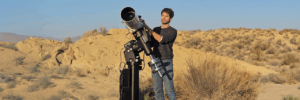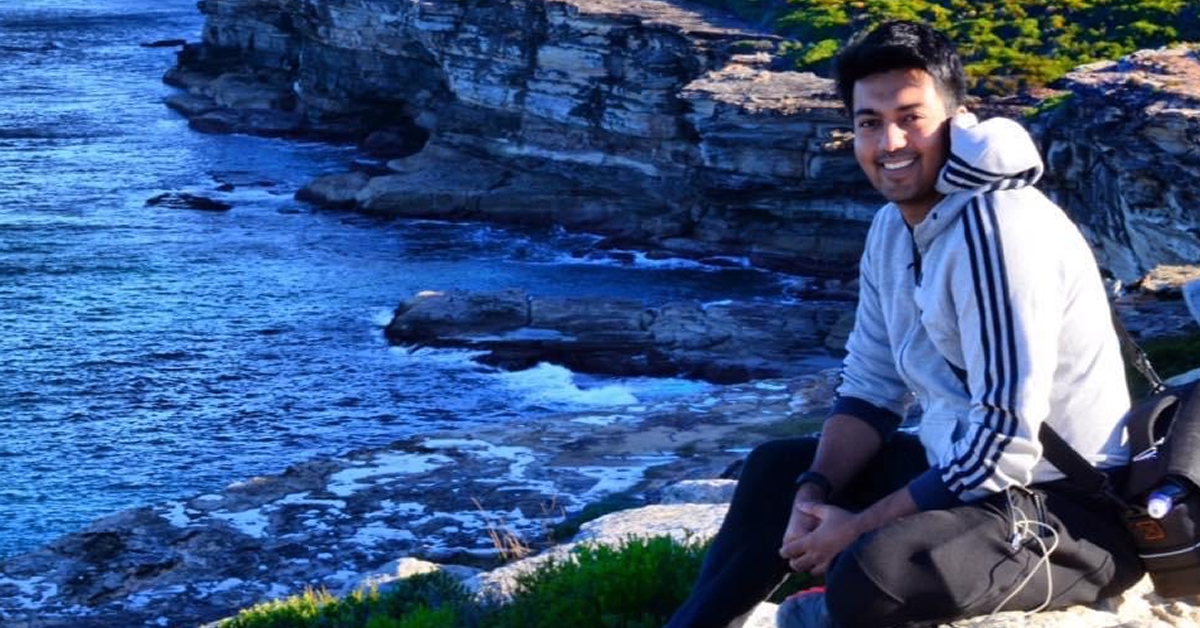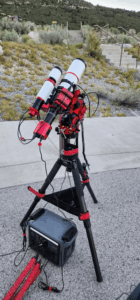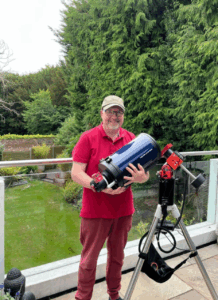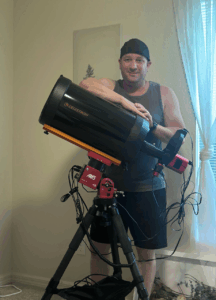Q1: At first, congratulation that your nice image won #ASIWEEK. Can you introduce yourself to us?
Thank you very much, for selecting one of my photos as the image of the week. I am really delighted! I am Prasun Agrawal, living in the beautiful city of Sydney, in Australia. I have a lovely 3-year-old daughter Alana who is as interested in the night sky and stargazing as I am, which makes me very happy.

Q2: When and how did you start astrophotography? What was your first telescope?
I have always been an avid follower of astronomy, and the secrets of the cosmos have always made me curious. Astrophotography has been a more recent passion. It started when I first visited a dark sky reserve in Australia, the Warrumbungles National Park, and looked through a telescope at a truly dark night sky. The experience was beyond words. I then got interested into how various nebulae and galaxies look like, and that’s when I started seeing some of the amazing work on YouTube and other places. Special mention for Trevor Jones – his channel was the first that I started following, and his storytelling made me a fan of not just his channel, but of astrophotography in general. I never believed I would be able to take photos like the ones I saw, but learning the nuances of astrophotography over the last year has been extremely rewarding. My first photo was that of the Lagoon nebula, taken with a stock DSLR and with a very basic star tracker. My first telescope was the Meade series 6000 70mm quadruplet astrograph. It’s still one of my workhorses for wide field work.

Q3: What equipment do you use? Any pictures of them?
I am currently using the ASI2600MM Pro with the ZWO EFW as the main imaging setup. I use the 3.5nm Antlia filters for Ha and Sii, and the 3nm Chroma for Oiii, along with LRGB filters from ZWO. I have now upgraded to the EQ6R Pro mount. Guiding is with the ASI 120mm, and the ASIAIR Pro controls everything from the comfort of my bedroom. The picture below is my earlier setup, where I was using the ASI183MC Pro.

Q4: What type of telescopes do you prefer?
I mostly prefer apochromatic refractors, because of the crispness and sharpness of stars. Ideally, a Petzval design like the Meade that I have, so I don’t need to worry about back focus so much. I do plan to buy an SCT sometime this year to image galaxies and smaller nebulae better, so saving up for it!
Q5: We love the beautiful colors of your winning picture IC 2944. Can you tell us how did you capture this target and how did you do post-processing?
I captured this target from my terrace, which has a nice and clear view of the southern sky. Being in the southern hemisphere, having a clear south view is a blessing, so I can polar align very quickly and accurately. As its winter for us here, I can easily get about 10-11 hrs of imaging time per night. For this target, I aimed for a window of clear skies, and captured around 7hrs of Ha data one night, and about 5 hours each of the Oiii and Sii data the next night. I usually go for 900s of exposure time from my Bortle 8 location, at 0 gain. Winters allow for a sensor temp of -20’C, which reduces noise tremendously. Again, the ASI AirPro is such an amazing device, so I don’t need to sit in the freezing cold and can run the session from my iPad, lying on my bed! For post processing, I usually use a mix of 2-3 applications. For this target, I stacked and integrated using Astro Pixel Processor, and the rest of the processing was done in PixInsight. Photoshop was used for some final touches. I used Starnet for PixInsight to create the starless version.


Q6: We all know that post-processing is a very important but also difficult part of astrophotography. Do you have any experience that share with us?
Before I started using PixInsight, I found it very challenging to control star colour. Most of my images ended up having just bright white stars throughout. When I started using PixInsight, I was amazed at the Starnet feature that also creates a very accurate star mask. Now, I usually process my stars separately with some RGB data, and then add it to my final image. This produces more pleasing effects for me.
Q7: What is the most enjoyable moment for you when doing astrophotography?
I like the entire process of setting up my rig, and then going through the various steps to get to a point where you see the first sub on the iPad which gives a lot of satisfaction. It just gives me immense pleasure to be able to capture what is out there, but our eyes cannot see. When I share my complete images with friends and other astro friends, their encouragement is something I really look forward to.

Q8: What changes do you think this hobby has brought you?
This has made me much more patient! Waiting endlessly for clear nights, polar alignment (before the AAP) through a star tracker’s viewfinder, finding and framing targets (before GoTo) have all made me realise how impatient I was with things. Slowly, as I have now graduated to much faster polar alignment, using GoTo, I feel that patience has continued, and I am much more relaxed throughout the entire process now.

Q9: Are you active in other astronomy-related activities except from astrophotography?
I am part of an astronomy group in Sydney (the North Sydney Astronomers’ Society) where I also love to do some seeing. But mostly, photography is what interests me the most
Q10: How did you know ZWO? How many ASI cameras do you have?
I came to know about ZWO as I as watching various YouTube channels before buying my first telescope. I carefully looked at various options, and the ecosystem that ZWO provided, especially with the ASI AirPro, the highly efficient sales team and a very responsive customer team made me go with ZWO. I have never been disappointed since. I have 2 cameras right now – the 2600mm pro and the 120mm guide cam. I also used to have the 183mc Pro, which was my first dedicated astro camera.

Q11: Are you satisfied with your new camera ASI2600MM Pro?
Yes, very satisfied. I love the details that this sensor can capture, and the way it is packaged in the camera is really a job well done.
Q12: We noticed that you also use ASIAIR PRO. Does it provide the functions you need? Can you give us some feedback on it?
I love the ASIAIR Pro. Period! It’s the first device I got and am amazed at how versatile it is. It provides all the functions that I need. I have two feature requests and a design suggestion:
1. The ability to adjust gain in autorun sequences
2. A stronger, longer range wifi built in
A design suggestion is that the usb ports may be spaced a little bit more. For example, the eqmod cable that I use is a bit bulky at the end, and so I cannot use the usb port adjacent to where I plug in the eqmod cable. I assume some people may have trouble with aftermarket usb drives and cables.

Q13: What objects do you plan to shoot next?
Next on my list is the Fighting Dragons of Ara (NGC 6188) and the veil nebula. The veil nebula is a bit challenging as its always low on the horizon from Sydney, but I hope to get some good data over multiple nights.

Q14: What suggestions do you have for ZWO? Please do not hesitate to tell us if you do have any ;D
For now, I honestly feel ZWO is doing a great job on all fronts – sales, customer support, tech support. I would say keep it up!

